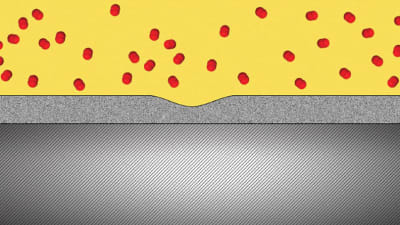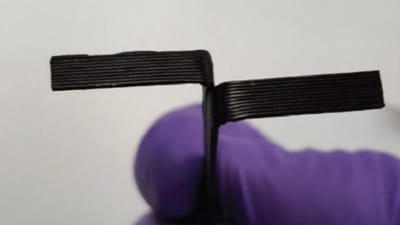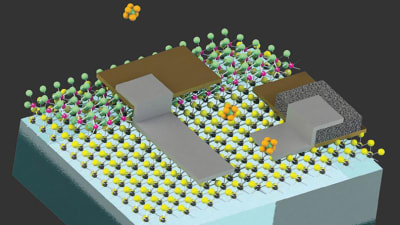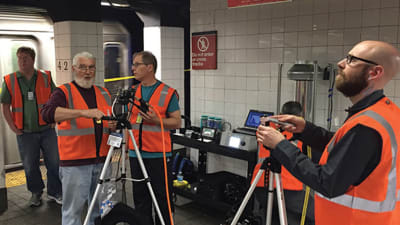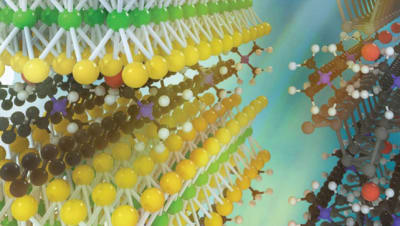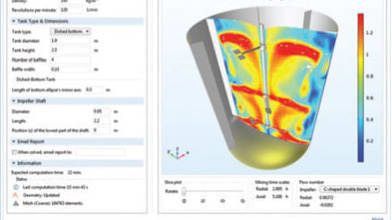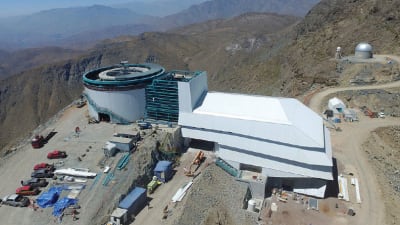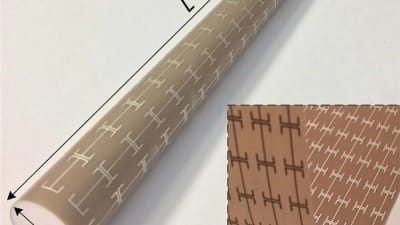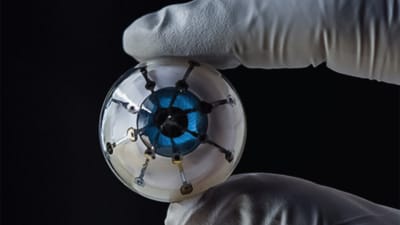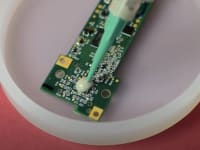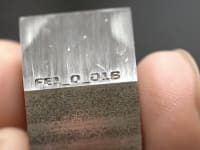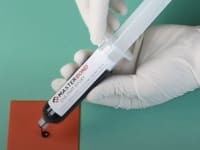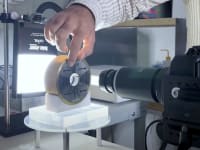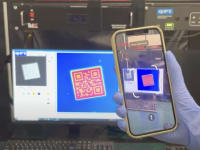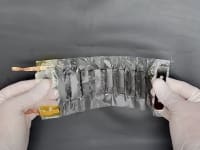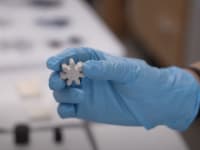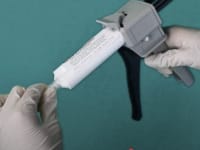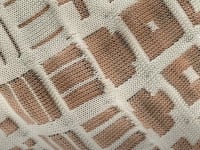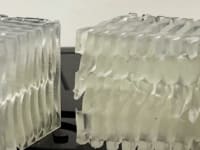Stories
38
61
0
1980
30
Briefs: Materials
Piezoelectric Resonator with Two Layers
Microelectromechanical systems (MEMS) filters have advantages in being able to reduce the size, weight, and power required when used as part of electronic systems such as radios; however, MEMS-type filters have limitations. For example, thickness MEMS-type filters (e.g., thickness-extensional mode...
Briefs: Nanotechnology
A new method increases the service life of concrete structures by reducing the infiltration rates of deleterious ions. The key is a nano-sized additive that slows down penetration of chloride...
5 Ws: Transportation
Who
The Safe Impact Resistant Electrolyte (SAFIRE) fire-resistant battery can be used in consumer electronics such as cellphones, in drones and cars, and in soldiers’ packs.
Briefs: Materials
Most metals, with the notable exception of gold, tend to oxidize when exposed to air and water. This reaction — which produces rust on iron, tarnish on silver, and verdigris on copper or...
Articles: Manufacturing & Prototyping
This column presents technologies that have applications in commercial areas, possibly creating the products of tomorrow. To learn more about each technology, see the contact information provided for that innovation.
Products: Materials
Thermography Systems
Advanced Thermal Solutions, Norwood, MA, announced the tvLYT™ liquid crystal thermography system that provides a portable solution for temperature measurement of electronics, circuit...
Briefs: Manufacturing & Prototyping
Eagles can store energy in their feet without having to continuously contract their muscles to then jump high or hold on to prey. New materials have been created that can store energy this way. The...
Briefs: Aerospace
Synthesis and Development of Polyurethane Coatings Containing Fluorine Groups for Adhesive Applications
Accumulation of insect strikes on the leading edge of airplane wings is a more serious problem than one might realize. Depending on the magnitude, such accumulation changes the aerodynamic characteristics of the wing, causing a change from...
Briefs: Energy
Colloids — insoluble particles or molecules anywhere from a billionth to a millionth of a meter across — are so small they can stay suspended indefinitely in a liquid or even in air. Robots about...
Briefs: Electronics & Computers
Quantum computers will be able to solve problems well beyond the reach of existing computers while working much faster and consuming vastly less energy. An inorganic compound was developed that...
Q&A: Aerospace
Professor Hopkins and University of Virginia colleagues — in collaboration with materials scientists at Penn State, the University of...
Briefs: Manufacturing & Prototyping
Bacteria-Fighting Polymers Created with Light
Hundreds of polymers that could kill drug-resistant superbugs in novel ways can be produced and tested using light. The new method may help identify antimicrobials for a range of applications from personal care to coatings.
Briefs: Electronics & Computers
Current density is the amount of electrical current per cross-sectional area at a given point. As transistors in integrated circuits become smaller and smaller, they need higher and higher...
Facility Focus: Photonics/Optics
Lawrence Livermore National Laboratory (LLNL, Liver-more, CA) was established in 1952 at the height of the Cold War to meet urgent national security needs by advancing nuclear weapons...
Briefs: Semiconductors & ICs
Fabricated using inexpensive and widely available organic pigments used in printing inks and cosmetics, an artificial retina was developed that consists of tiny pixels like a digital camera sensor on a...
Briefs: Lighting
One current method to build a semiconductor superlattice — materials comprised of alternating layers of ultra-thin, two-dimensional sheets only one or a few...
Products: Materials
COMSOL, Burlington, MA, introduced COMSOL Multiphysics® version 5.4 that features the new COMSOL Compiler™ for creating standalone simulation applications and digital twins for the Windows® and Linux® operating...
Articles: Test & Measurement
In order to make ultrafast pulses accessible to the broadest possible field of applications, Coherent has been implementing a comprehensive program of design methodologies, materials...
Application Briefs: Lighting
Motion capture (Mocap) is a technique used in the film industry to digitally track a human actor's movements and precisely transfer those motions to an animated figure. But it has other applications as well....
Question of the Week: Materials
Will Paint-On coatings Become a Popular Way to Cool Down Buildings?
Our lead INSIDER story today featured a paint-on polymer that cools down buildings, through a process known as passive daytime radiative cooling.
Read the article, and let us know what you think.
This week’s Question: Will Paint-On coatings Become a Popular Way to Cool Down...
Blog: Energy
A new solution, applied like paint, cools down rooftops, buildings, water tanks, vehicles, and even spacecraft.
Question of the Week: Manufacturing & Prototyping
What NASA Spin-Off Stands Out to You?
NASA technologies have led to many of the commercial products and innovative solutions we use every day, from memory foam and freeze-dried foods to exercise equipment and water purifiers. The October issue of Tech Briefs showcased a number of these NASA spinoffs.
Read the Tech Briefs feature article, and share...
News: Materials
The grand-prize-winning nanotechnology coating imparts anti-reflection and water-repellency capabilities to surfaces made of silicon, glass ,and some plastics, including Teflon.
Question of the Week: Test & Measurement
Are You Currently Using Mechanical Test Equipment to Measure Strain?
One way to measure strain and deformation in a material is through digital image correlation and non-contact sensors. Next week, in a live webinar presentation, speakers from Trilion Quality Systems and MTS Systems Corp. will review how customers have used their imaging and...
Application Briefs: Imaging
The Large Synoptic Survey Telescope (LSST), under construction atop 8,737-foot El Peñón peak in northern Chile, is a partnership project of the National Science...
Products: Motion Control
Multi-Voltage Motors
Simotics SD Pro low-voltage motors from Siemens (Munich, Germany) are suited for mains-fed operation or with a converter for voltages up to 690 volts. There is generally no need to use special filters at the...
Briefs: Photonics/Optics
Researchers have developed a method to simultaneously control diverse optical properties of dielectric waveguides by using a two-layer coating, each layer with a...
Briefs: Energy
Researchers have 3D-printed an array of light receptors on a hemispherical surface. This discovery could lead to a “bionic eye” that could someday help blind people see or sighted...
Products: Test & Measurement
Temperature Transmitters
The Sitrans TH320/420 and TR320/420 WirelessHART (Highway Addressable Remote Transducer Protocol) temperature transmitters from Siemens, Erlangen, Germany, are available for a range of...
Top Stories
Blog: Manufacturing & Prototyping
2025 Holiday Gift Guide for Engineers: Tech, Tools, and Gadgets
Blog: Power
Using Street Lamps as EV Chargers
INSIDER: Semiconductors & ICs
Scientists Create Superconducting Semiconductor Material
Blog: Materials
This Paint Can Cool Buildings Without Energy Input
Blog: Software
Quiz: Power
Webcasts
 Upcoming Webinars: AR/AI
Upcoming Webinars: AR/AI
The Real Impact of AR and AI in the Industrial Equipment Industry
 Upcoming Webinars: Motion Control
Upcoming Webinars: Motion Control
Next-Generation Linear and Rotary Stages: When Ultra Precision...
 Podcasts: Manufacturing & Prototyping
Podcasts: Manufacturing & Prototyping
SAE Automotive Engineering Podcast: Additive Manufacturing
 Podcasts: Defense
Podcasts: Defense
A New Approach to Manufacturing Machine Connectivity for the Air Force
 On-Demand Webinars: Manufacturing & Prototyping
On-Demand Webinars: Manufacturing & Prototyping
Streamlining Manufacturing with Integrated Digital Planning and Simulation




